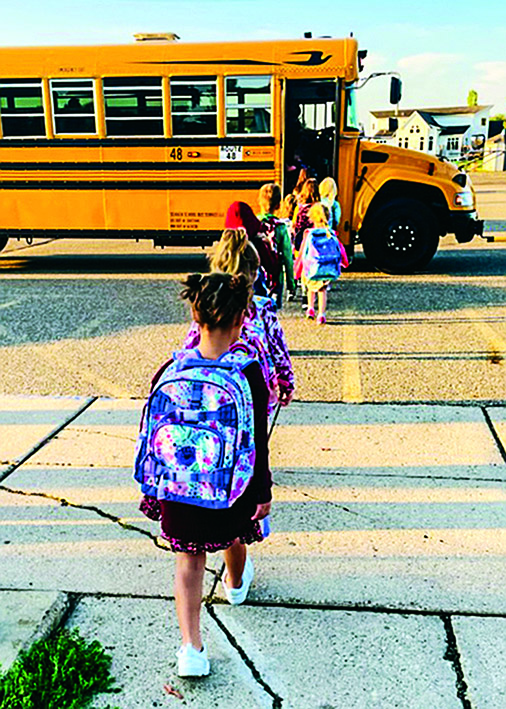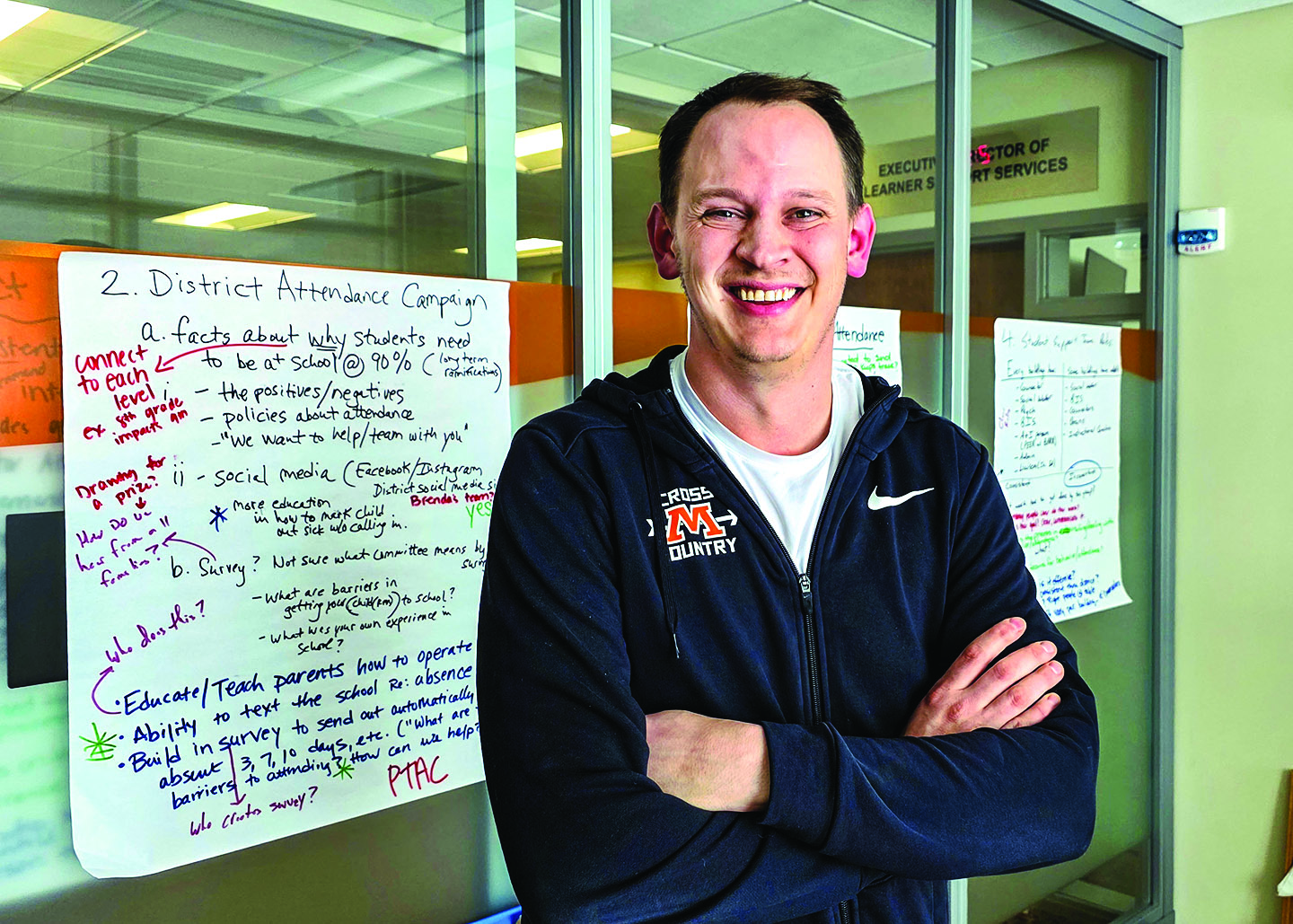
Absenteeism increases in Moorhead, as elsewhere, as students leave elementaries for middle and high school.
Nancy Edmonds Hanson
It seems simple enough: To succeed in school, the students need to be there. But as a team of Moorhead educators and staff has found out in the first year of a program to improve attendance, Job #1 is to figure out how to count them.
“Depending on the data you look at, our attendance is doing pretty good, compared with the rest of the state,” says Isaac Lundberg, “but we could do better. The outcome for students matters most. Are we doing everything we can to get them to school and give them the support they need?”
Lundberg knows the classroom. Since being hired to teach sociology to 7th and 8th graders after his graduaion from the University of Minnesota in 2013, he has .
“Pretty good,” in this case, is in the neighborhood of 70% who are in their classrooms at least 90% of the time. That’s slightly fewer in consistent attendance than the statewide estimate of 75%, but somewhat better than some other schools participating, along with Moorhead, in the statewide Student Attendance Pilot Program.
Established by the 2024 Minnesota Legislature, the project aims to find ways to overcome attendance and truancy issues that plague the education system. Moorhead’s schools are one of the larger among the 12 districts chosen for the pilot program. Launched in the summer of 2024, the three-year program’s mission, as defined in St. Paul, is to develop and carry out strategies to reduce the number of young people who are missing out on their education – approaches that can be replicated in other schools across the state.
Lundberg and his committee meet twice each month, bringing together research data and their professional insights to identify issues preventing children and teens from attending and to find strategies that can make a difference. They get together with the other schools once per month, including representatives from the Minneapolis, Columbia Heights, Red Lake, Sauk Rapids-Rice, Mankato, Cook County, Windom, Burnsville, Rochester, Northfield and Chisholm school districts.
The project director calls their statewide meetings fascinating. “Our challenges are so different,” he says. “Take transportation, a common issue. You have Minneapolis, where transportation isn’t even provided for high school because of ample access to public transport. And then there’s Cook County, where students have to travel crazy amounts of miles.”
One “given” underlying their discussions: The problem is far greater all across the state today than it was 10 years ago. In 2015, the Moorhead district estimates absenteeism affected about 15% of its student body. During the 2023-2024 school year – after the disruption caused by the COVID-19 pandemic – it reached 30.4%.
That figure includes all students who miss school. “Kids miss school for all kinds of legitimate and good reasons,” Lundberg notes, pointing to severe illness, transportation, income and family problems. He adds, “And even when there are good reasons, they’re missing valuable instructional time.”
As they enter their teens, though, students are often absent for less acceptable reasons that fall into the category of truancy. In Minnesota, a child is considered a “habitual truant” if they are under 17 and absent from school without a lawful excuse for seven days, or one or more class periods on seven days. Failure to do so can lead to legal consequences.
While organizing reliable, consistent reporting data is the initial challenge the committee has faced, its ultimate goal is to try out strategies to connect each child more firmly to their school and its educational resources. He mentions two: “Check and Connect” and the new partnership with the Clay County Attorney’s Office through the Attendance Review Board.
Check and Connect pairs students who have past attendance issues with an adult mentor. They meet weekly to talk about attendance and grades, looking for ways to solve problems that keep the student out of school. Two Americorps volunteers are piloting the program in the middle and high school.
The other, the Attendance Review Board, addresses older youth whose truancy has become a legal issue. It’s intended to combine legal services with social services other community agencies and the schools to hammer out a consistent approach to intervene in whatever situations lie behind the young student’s absence from the classroom.
“More kids are making choices that aren’t getting them to school,” he acknowledges. “We’re talking about thousands – thousands – here in our own school district.
“Sometimes it’s a matter of motivation. Where are we missing the mark on them wanting to be here? We’ve got to wrestle with that part.
“But many, many of them are facing real issues in their lives that keep them away – issues that have nothing to do with school itself. If they’re unhoused, say, or must largely support themselves, it’s a hard thing to ask the school to solve. It goes beyond us. We’ve got to have a larger community conversation to address that.
“We know the most important factor in their success in school is being here every day.”



